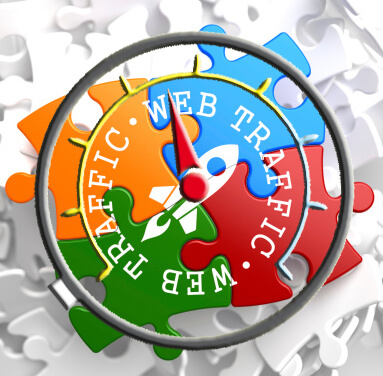How to Measure SEO Results
Measuring SEO results can be a tricky thing. After all, search engine optimization is not one single thing, but rather a system of things that have to be observed, tracked, understood, and then acted upon in order for it to help you and your business. There are several key components that go into SEO and performance tracking, however, and by tracking these components you can obtain a relatively accurate picture of how your website is doing and where changes should be made. Understanding how to measure your search engine marketing results can help you make better decisions regarding marketing, web content, design, and product and service offerings.
Traffic
There are two things about traffic you’ll want to take note of when measuring SEO results. First, be sure to note where your traffic is coming from. If you have a lot of organic traffic, meaning traffic from search engines or people who have found your site from your link building efforts, that’s very good. The more traffic you have coming from these locations, particularly search engines, ads you’re running, and link building efforts, the better. Second, pay attention to how much traffic you’re getting. You want to have a high stream of traffic coming through your website, but you also want to make sure you’re obtaining high quality traffic, which the other measures of success will discuss in more detail.
Bounce Rate
Bounce rates should be no greater than 30 percent. If you have a bounce rate that is any higher, chances are your site doesn’t have enough depth, or your content is not seen as relevant by your visitors. If you only have “about us”, “contact”, and “services” pages, chances are you need to add a lot more content (articles, a blog, etc.) and more sub-pages with relevant content to your viewers. If your site is stocked with content and you still have a high bounce rate, the problem is likely that your content is not engaging or not interactive, or both.
Conversion Rate
Traffic is great, but the point of your website is to make money, get views, or whatever other measure of success you have set up. If you sell a product and you get a million hits a day, but nobody ever buys anything, that’s still not a successful website. The conversion rate is a way to measure how many people that come to your site are actually completing the action you want them to take, usually to buy a product, request info, or a similar action. If your conversion rate is very low, you might want to consider adding a call to action, making your site easier to navigate, and leading your customer to the purchase page. If your links drop your visitors on the home page and it’s not immediately understood that you have a product or service to sell, your bounce rate will likely be high and your conversion rate will likely be low. Every page should have a button that leads people to the purchase page, and several of your off-site links should take people directly to the purchase page in a relevant and contextual manner.
SEO is much more complicated than the items listed above. However, by paying attention to these key performance indicators, you can get a good overall picture of how well your SEO is serving you. Of course, you also want to make sure that wherever you have an ad, you also have traffic coming from that source. If you don’t, change your ad or find another provider. SEO boils down to attracting search engines, engaging users, and making conversions, and the items above help you understand whether or not this is happening.










